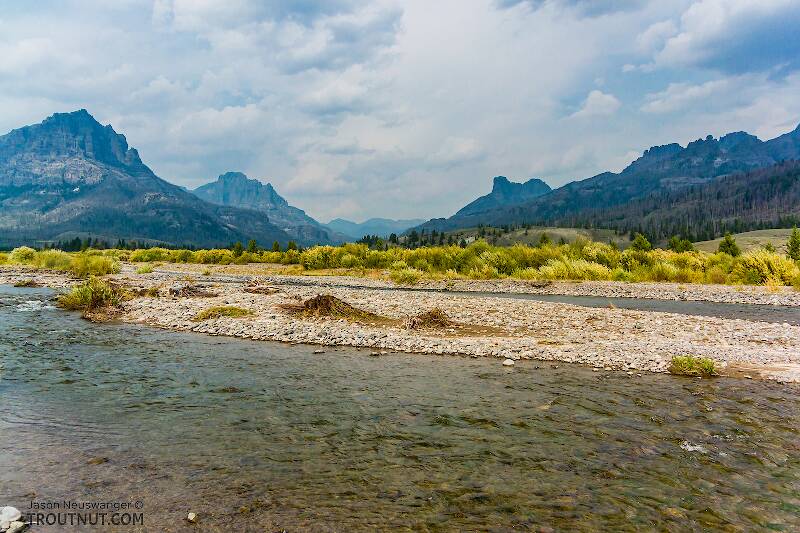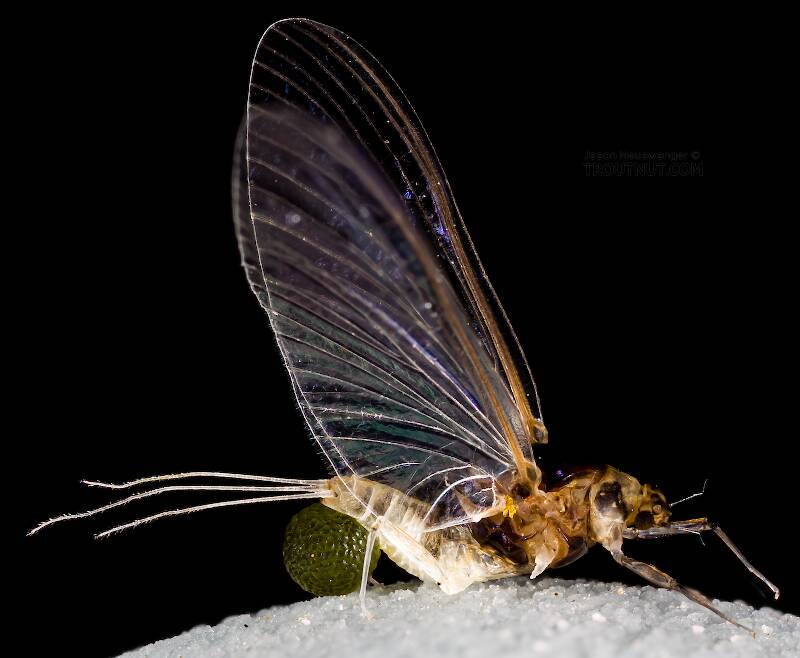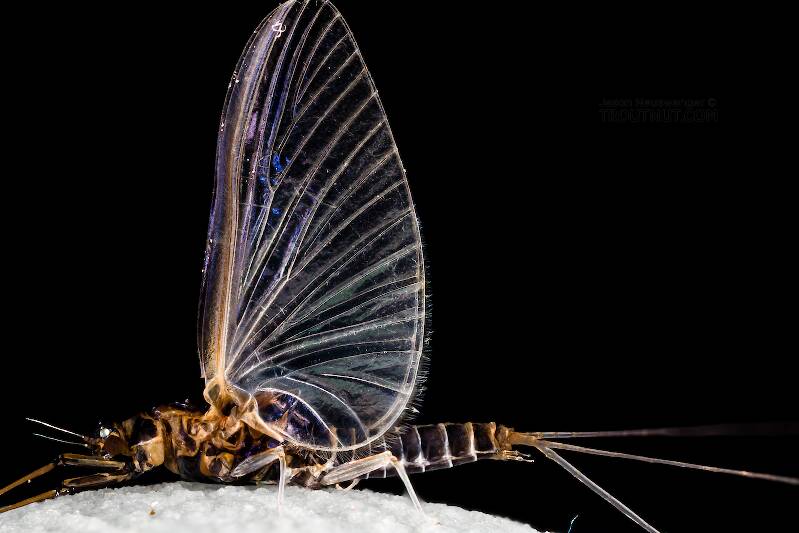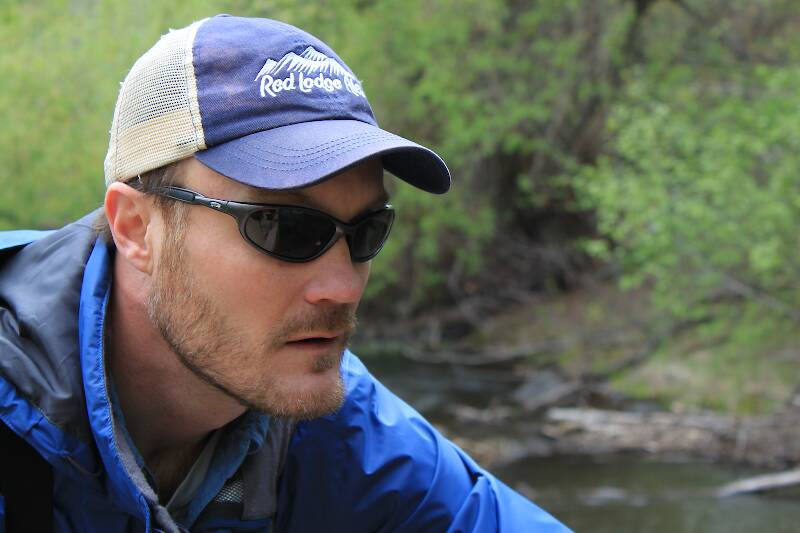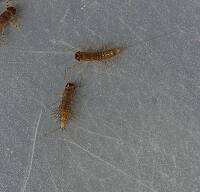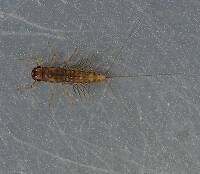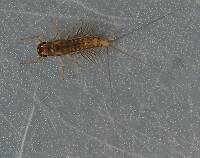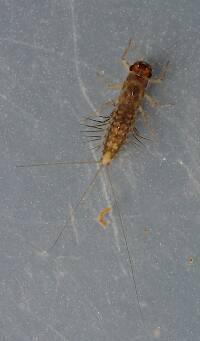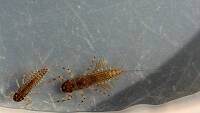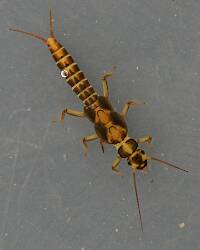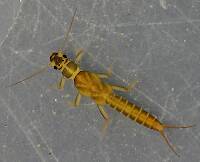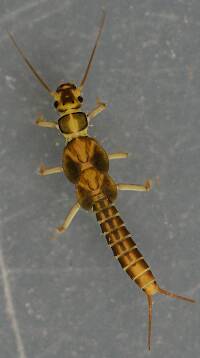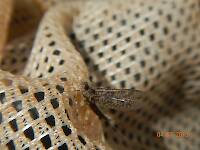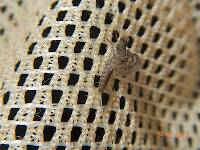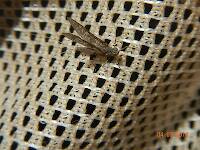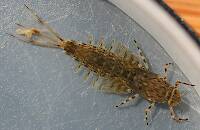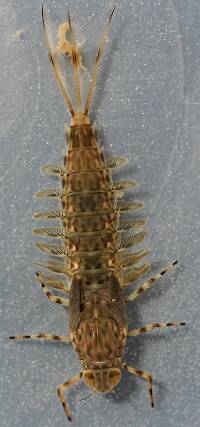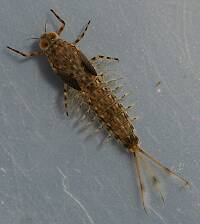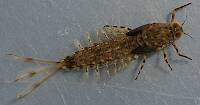
Salmonflies
Pteronarcys californica
The giant Salmonflies of the Western mountains are legendary for their proclivity to elicit consistent dry-fly action and ferocious strikes.
Featured on the forum

This one seems to tentatively key to Holocentropus, although I can't make out the anal spines in Couplet 7 of the Key to Genera of Polycentropodidae Larvae nor the dark bands in Couplet 4 of the Key to Genera of Polycentropodidae Larvae, making me wonder if I went wrong somewhere in keying it out. I don't see where that could have happened, though. It might also be that it's a very immature larva and doesn't possess all the identifying characteristics in the key yet. If Holocentropus is correct, then Holocentropus flavus and Holocentropus interruptus are the two likely possibilities based on range, but I was not able to find a description of their larvae.

Troutnut is a project started in 2003 by salmonid ecologist Jason "Troutnut" Neuswanger to help anglers and
fly tyers unabashedly embrace the entomological side of the sport. Learn more about Troutnut or
support the project for an enhanced experience here.
This topic is about the Mayfly Genus Tricorythodes
A cult following is something to which few insects can lay claim, but the tiny Tricorythodes mayflies certainly qualify. Their widespread, reliable, heavy hatches draw impressive rises of ultra-selective trout which demand the most of a technical dry-fly angler's skills.It is surprising that such a great hatch took so long to come to the attention of fly fishermen. The Tricos were first introduced to anglers in a 1969 Outdoor Life article by Vincent Marinaro, who misidentified them as Caenis. By the early 1970s the identification had been corrected but Swisher and Richards still wrote in Selective Trout, "Few anglers are familiar with these extremely small but important mayflies." The next wave of publications boosted Tricorythodes to its current fame. I suspect their early dismissal was due in part to tackle limitations; anglers in the 1950s had no means to effectively tie and present size 22-28 flies.
Example specimens
Lastchance on Jul 2, 2011July 2nd, 2011, 2:40 pm EDT
Do they attach themselves in the silt near the shore? I'd like to study a few of them.
Thanks,
Bruce
Thanks,
Bruce
Konchu on Jul 2, 2011July 2nd, 2011, 4:25 pm EDT
I have found them among rocks where there's some flow in the stream, but theres often a fair amount of silt in with them. Doesn't mean they're not where you suggested--just my experience.
Spinnerfall on Jul 9, 2011July 9th, 2011, 9:38 pm EDT
Informative. Thanks Konchu!
Entoman on Jul 10, 2011July 10th, 2011, 9:41 am EDT
Hi Tim,
I've also found them at the bases of rooted weeds in the silt, and in the weeds themselves as they stage for hatching.
Regards,
Kurt
I've also found them at the bases of rooted weeds in the silt, and in the weeds themselves as they stage for hatching.
Regards,
Kurt
"It's not that I find fishing so important, it's just that I find all other endeavors of Man equally unimportant... And not nearly as much fun!" Robert Traver, Anatomy of a Fisherman
Quick Reply
Related Discussions
Topic
Replies
Last Reply
13
Sep 2, 2008
by Martinlf
by Martinlf
6
Aug 21, 2010
by Gutcutter
by Gutcutter
8
Jul 26, 2016
by Oldredbarn
by Oldredbarn

